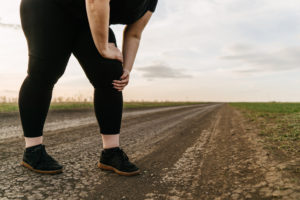 Leg cramps hit hard. Sometimes they attack when you’re out for a walk, while other times, all you have to do is stand up from the sofa. Heck, they can even take hold in the middle of the night while you’re fast asleep.
Leg cramps hit hard. Sometimes they attack when you’re out for a walk, while other times, all you have to do is stand up from the sofa. Heck, they can even take hold in the middle of the night while you’re fast asleep.
These sharp, intense bouts of pain can last for several minutes and be a major cause of concern. Particularly if they are happening consistently and inexplicably. But what if you’ve been the doctor to have it checked out and been told everything is okay?
Advertisement
Believe it or not, it happens a lot. Of course, there are a number of conditions that can lead to leg pain and cramping. Poor circulation, deep vein thrombosis (DVT), tendinitis, fractures, and sciatic nerve pinching can all cause pain in your legs.
What are you supposed to do if you’ve been cleared of these conditions? Pain killers don’t work and there is no way to tell when a cramp might hit.
Prevention is often the best treatment for leg cramps. The easiest thing you can do to prevent cramping is ensuring you’re drinking enough water every day and eating a nutritious diet.
Fluid intake can be tracked by monitoring the color and frequency of urine. If your urine is yellow or dark yellow, you might want to drink up.
Light yellow or clear urine indicates you’re adequately hydrated. Also, if you’re not going for hours at a time, you may need to up your fluid intake.
Advertisement
Eating potassium- and magnesium-rich foods can also help prevent cramping. Potassium-rich foods include bananas, oranges, cantaloupe, spinach, broccoli, grapefruit, and much more. You can get magnesium from nuts, avocado, legumes, and whole grains. Adequate calcium may also prevent cramps.
Regularly stretching and massaging your muscles can also help prevent cramping and keep muscles loose. This is especially important if you’re heading out for a walk or plan to be on your feet for a while.
When you need quick relief from cramps, stretch your leg out and pull your toes forwards you. You can also stand up and pull the balls of your feet up off the ground.
